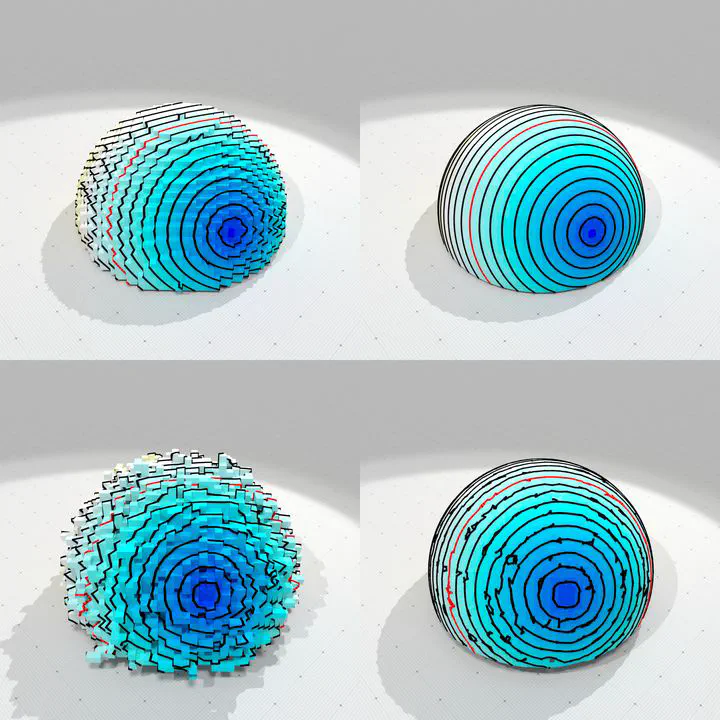A Simple Discrete Calculus for Digital Surfaces

Abstract
Computing differential quantities or solving partial derivative equations on discrete surfaces is at the core of many geometry processing and simulation tasks. For digital surfaces in $\mathbb{Z}^3$
(boundary of voxels), several challenges arise when trying to define a discrete calculus framework on such surfaces mimicking the continuous one: the vertex positions and the geometry of faces do not capture well the geometry of the underlying smooth Euclidean object, even when refined asymptotically. Furthermore, the surface may not be a combinatorial 2-manifold even for discretizations of smooth regular shape. In this paper, we adapt a discrete differential calculus defined on polygonal meshes to the specific case of digital surfaces. We show that this discrete differential calculus accurately mimics the continuous calculus operating on the underlying smooth object, through several experiments: convergence of gradient and weak Laplace operators, spectral analysis and geodesic computations, mean curvature approximation and tolerance to non-manifold locii.
Type
Publication
Discrete Geometry and Mathematical Morphology - Second International Joint Conference, DGMM 2022, Strasbourg, France, Oct 24-27, 2022, Proceedings, pp 341-353, volume 13493 of Lecture Notes in Computer Science, 2022, Springer, Cham.